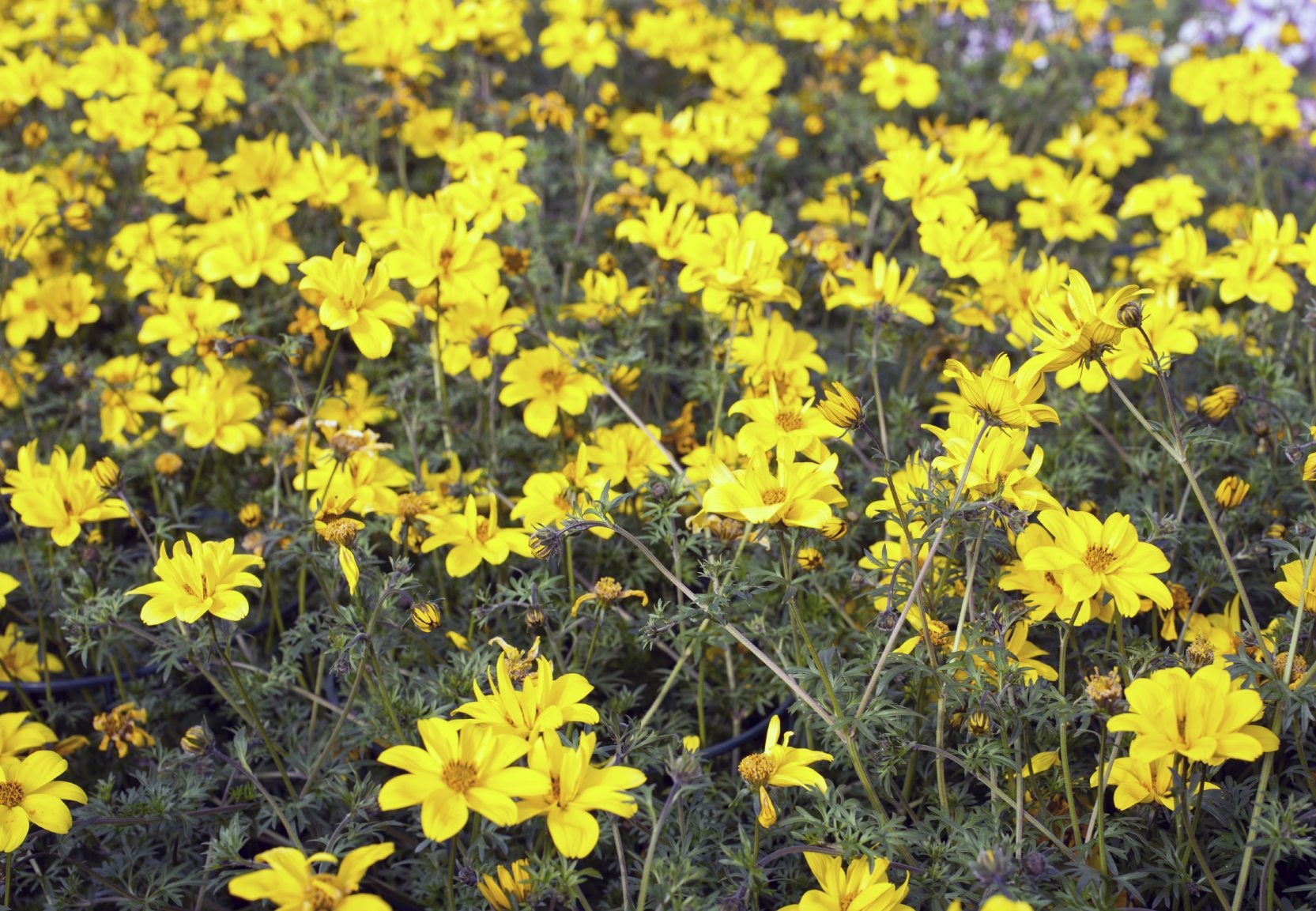Caring For Bidens Annuals: Information About Tickseed Sunflower Plants

Tickseed sunflower plants are easy to grow and make great additions to areas of the garden where they are free to self-sow. Let’s learn more about growing this interesting plant.
Bidens Tickseed Wildflowers
Tickseed sunflower plants (Bidens aristosa) are in the Aster family and from the genus Bidens. As such, they are composite flowers made up of bright yellow ray flowers (what most people think of as "petals" on an aster) and small darker yellow or brown disc flowers clustered at the center. They are also typically called Bur Marigolds or Bearded Beggarticks. This fast-growing annual grows 4-5 feet (1-1.5 m.) tall. Hundreds of 2-inch (5 cm.) golden daisies with buttery tips and dark, fringed eyes smother fine foliage in summer. Tickseed sunflower plants typically have a lot of branches too. It may look like the plant has many little deep green-toothed leaves, but what you see are actually leaflets that make up a larger compound leaf. The plant prefers moist, open habitats. While they are considered invasive in some areas, their ability to colonize new and disturbed habitats makes them conspicuous plants in areas where other species might not be able to grow. In spring, you may see big patches of tickseed sunflowers along roads and in ditches where they take advantage of the run-off after rains. In fact, you may hear them called "ditch daisies." They are also found in wet soils around wetlands or in marshes.
Growing Bidens Tickseed
Tickseed sunflower plants are easy to grow because they generally self-sow. As a result of this, one of tickseed sunflower uses includes naturalizing the plant in your landscape. You can sow seeds in spring, planting in full sun. The plant blooms from July to October and the flowers attract butterflies and other insect pollinators. Caring for Bidens annuals is just as simple, since these plants basically do all the work for you. Keep the moisture level of this plant medium to wet. Problems with tickseed sunflower plants may crop up on occasion. It has possible invasive tendencies due to its ability to self-sow. Some other troublesome problems in growing this plant include the following issues:
Gardening tips, videos, info and more delivered right to your inbox!
Sign up for the Gardening Know How newsletter today and receive a free copy of our e-book "How to Grow Delicious Tomatoes".
-
 12 Lush Alternatives To A Lawn For Sustainable Spaces
12 Lush Alternatives To A Lawn For Sustainable SpacesAlternatives to a lawn are beautiful and also beneficial to your local ecosystem and its pollinators. Explore our top picks for plants to replace grass.
By Tonya Barnett
-
 Types Of Tomatoes Explained: Explore The Many Wonderful Shapes, Colors, Flavors, & Best Uses
Types Of Tomatoes Explained: Explore The Many Wonderful Shapes, Colors, Flavors, & Best UsesThe world of tomato varieties is vast and fascinating. Learn about the key types to grow in your garden, tailored to your preferences and space.
By Amy Grant
